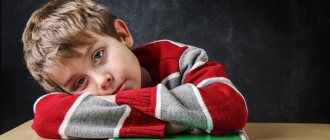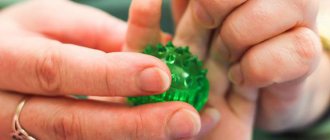Delayed speech development is not a death sentence, and if you contact specialized specialists in time, create a treatment plan, select medications and physical therapy for delayed speech development, you can return the child to the basic skills and abilities that he should have at his age.
Physiotherapy for delayed speech development is prescribed jointly by a pediatrician, neurologist, speech therapist or psychologist , after testing and passing certain tests. As a rule, along with medications, emphasis is placed on such procedures as:
- massage;
- transcranial magnetic therapy aimed at the headband;
- medicinal electrophoresis with nicotinic acid.
Physiotherapy for delayed speech development allows medications to penetrate the body faster and help in complex treatment.
Officially, the disease is treated up to the age of 7 years , so physiotherapy for delayed speech development can be prescribed regularly at short intervals to help restore speech function and enhance intellectual development, starting in early childhood.
Types, levels and forms of speech dysarthria in children
Table of types of disease by location of the lesion
| Name of the pathology form | Peculiarities |
| Cerebellar | Occurs when the cerebellum is involved in the process. Speech is drawn out, slurred, slow, the volume constantly changes, the child’s tongue trembles, he speaks with shouts, as if chanting slogans. Additional symptoms: poor balance, unsteady gait. |
| Bulbarnaya | It is caused by paralysis of the articulatory muscles, as well as the nerves - vagus, glossopharyngeal, ternary, sublingual and/or others. Children lack some reflexes, sucking and swallowing, facial expressions are impaired, and it is difficult for them to chew solid food. There is also increased salivation, simplification (all consonants “merge” into one fricative) and slurred sounds, a nasal, hoarse sound of the voice, sometimes its absence. |
| Pseudobulbar | Occurs with centralized paralysis (spastic) of muscles and their hypertonicity. Speech becomes monotonous, it is difficult for the child to lift the tip of the tongue, move it to the side, or hold it. There is increased salivation, soreness, and swallowing disorders (increased reflex). Speech is slurred, nasal, the pronunciation of hissing, whistling and tone sounds is sharply impaired. |
| Extrapyramidal | It occurs when the function of the subcortical nuclei is disrupted, and therefore received a second name – “subcortical”. Speech is slightly nasal, slurred, and slurred. There are involuntary muscle movements, facial expressions, and articulatory spasms. The timbre and strength of the voice changes, the pace of conversation is disrupted, and there are occasional guttural cries. |
| Cortical | Damage to those areas of the cerebral cortex that are responsible for articulatory muscles. Children pronounce words correctly in structure, but with impaired pronunciation of syllables. There is difficulty breathing during conversation and voice. |
| Cold | Manifests itself as one of the symptoms of myasthenia gravis (fatigue and weakness of striated muscles). Speech disruptions occur when the air temperature in the room where the child is located increases or decreases. |
Classification according to the degree of development of pathology:
- I (erased) - only a speech therapist can identify incorrect pronunciation during examination and examination, almost complete recovery is possible;
- II – pronunciation is clear, but defects are noticeable;
- III – the child is understood only by close people, strangers rarely;
- IV – even relatives do not understand the pronunciation or there is no speech, most often considered within the framework of cerebral palsy.
Important! The erased form is characterized by difficulty chewing solid food. Parents should not change their child's diet because of this. It is necessary to gradually accustom him to chew on the same basis as other people. Source: E.F. Arkhipova Erased dysarthria in children: a textbook for university students // M.: AST: Astrel: KHRANITEL, 2006, p.319
Causes and symptoms
The disease is provoked by a number of harmful factors:
- viral diseases of the expectant mother;
- pathologies of the placenta at the stage of intrauterine development;
- Rhesus conflict;
- fetal hypoxia;
- very rapid or slow labor with cerebral hemorrhage in the child;
- some birth injuries;
- prematurity;
- infections of the brain and its membranes, such as meningitis;
- Cerebral palsy (up to 85% of cases of dysarthria);
- TBI;
- hydrocephalus;
- severe intoxication;
- encephalitis. Source: L.I. Belyakova, Yu.O. Filatova Diagnosis of speech disorders // Defectology, 2007
Symptoms and treatment
The main symptoms include the following:
- incomprehensible, slurred speech;
- spastic manifestations in the articulatory muscles (neck, lips, face, tongue are constantly tense, articulation is limited, lips are tightly closed);
- hypotonia of the articulatory apparatus (lips do not close, tongue lies motionless in the mouth, mouth is slightly open, increased salivation);
- dystonia of articulatory muscles (when a child tries to talk, his muscle tone goes from low to high);
- slurred pronunciation;
- in difficult cases, the child misses sounds, replaces them or pronounces them distorted; Source: O.Yu. Fedosova Features of sound pronunciation of children with mild dysarthria // Speech therapist in kindergarten, 2005, No. 2, pp. 36-41
- slowness of conversation;
- inability to speak (in severe forms);
- nasal voice without signs of a runny nose;
- change, omission, replacement of some sounds with others;
- fading of a phrase towards the end of its utterance, rapid breathing during a conversation due to lack of air;
- very high, almost “squeaky” voice;
- a fast or very slow flow of words, while the child cannot change the tone.
Advice from a speech therapist: “Strengthening the muscles of the speech apparatus”
Novozhilova Galina Aleksandrovna
Advice from a speech therapist: “Strengthening the muscles of the speech apparatus”
Incorrect pronunciation brings a child a lot of grief and difficulties in kindergarten, and at school these difficulties increase. Deficiencies in oral language often affect written language. The child does not cope well with the sound analysis of words, often uses another instead of one letter, and writes as he speaks. Clear pronunciation, lexical richness, grammatically correct and logically coherent speech are the merit, first of all, of family upbringing. And, on the contrary, insufficient attention to the child’s speech often becomes the main cause of pronunciation defects, failure to pronounce or distortion of sounds. We will help your child eliminate these violations, form and consolidate the correct articulation of sounds. And yet, you must take on the main burden of teaching your child to speak correctly! What will be required of you, loving parents, is close cooperation with teachers, patience, and the ability to interest your child and include him in the work process. If all conditions are fulfilled in good faith , then the classes will soon give the best results. Under no circumstances should you imitate a child’s incorrect pronunciation - “lisp”
with him.
Thus, you deprive the child of the opportunity to hear the correct pronunciation and distinguish it from the incorrect one. This leads to the fact that the child does not develop auditory self-control and distorted pronunciation is reinforced. You should always speak correctly with children and thus give the child a speech role model. Why do children have difficulty with some sounds? Firstly, their phonemic hearing is not yet sufficiently developed, so they often do not recognize sounds in an adult’s and reproduce them in a distorted form. Secondly, the child’s articulatory apparatus is still very unstable, and it is not easy for him to cope with obstacles in the path of the air stream when he pronounces consonant sounds. In order for the desired sound to be formed, the tongue, lips and teeth must take a certain position, and this is precisely what a child sometimes fails to do. The tongue, lips, lower jaw, and soft palate take part in the formation of sounds. Thus, when different sounds are formed, each organ occupies a certain position. In speech, sounds are not pronounced separately from each other, but one after another, so the organs of the articulatory apparatus must quickly change their position. Clear pronunciation of sounds, words, phrases can be achieved if all the organs involved in the formation of sounds are sufficiently mobile and their work is coordinated. Articulation gymnastics will help with this. Rules for performing articulatory gymnastics Articulation exercises help strengthen the muscles of the speech apparatus , form correct, full-fledged movements of the articulatory organs (tongue, lips, lower jaw, etc., improve diction; therefore, articulatory gymnastics is necessary for children with speech disorders , and is useful for all children, both with both for the purpose of preventing disorders and for the purpose of developing speech. It is recommended to carry out articulatory gymnastics systematically so that the developed skills are consolidated. It is better to practice every day 2 times a day for 5–10 minutes. At first, it is good to perform the exercises in front of a mirror, where the child will see both himself and you. In the future, it will be possible to do without a mirror. But do not forget that the child masters speech skills by imitating adults. Therefore, more often show the child how to do this or that movement, teach him to look at the adult and imitate him . The number of repetitions of articulation exercises varies depending on the age and motor abilities of the child and on average ranges from 3 to 5 repetitions. The static load can also increase as the child's motor capabilities increase. If at the beginning you can limit holding the articulatory position to a count of 2, then over time, as the muscles , the count increases to 5-10. Any exercise must be approached individually; you should not force events by trying to master a difficult exercise in a short time . It is better to carry out articulatory gymnastics in a playful way, imitating, competing or imitating someone. For example, by achieving a clear and correct position in the “Fence”
, it is easier for a child to master lip movements and keep them in the desired position if he portrays a frog with his mouth reaching to his ears. You can ask the child:
“Make a smile from ear to ear, even if you sew on the strings !”
. Flexibility of tongue movements and rapid vibration of the tip of the tongue are an important prerequisite for producing the r sound. For this purpose, you can play a game of horses and coachmen with your child. Coachmen click their tongues, horses clatter their hooves - both help develop the flexibility of the tongue and are interesting to the child. This formulation of the task creates a cheerful mood in the child and constructively facilitates the process of completing the exercise. To maintain interest in doing the exercises, you can use various poetic accompaniments for each type of exercise. Exercises to produce a strong stream of air, necessary for pronouncing hissing and whistling sounds, are very useful. For this purpose, you can invite the child to blow strongly on cotton balls, dandelions, light objects located in a basin of water (ships, fish, compare who blew better, whose boat sailed further. It is also useful to blow soap bubbles. But when doing breathing exercises Be careful and careful, as they can cause dizziness. It will be enough to perform them 5 times. Regular performance of articulatory gymnastics helps to develop correct, full-fledged movements of the articulatory organs necessary for the correct pronunciation of sounds.
What to do? Treatment methods for the disorder
The child must undergo additional classes with a speech therapist (at home or in a special institution) on:
- development of motor skills;
- forming a conversation;
- honing diction;
- correcting the pronunciation of distorted sounds;
- expanding vocabulary;
- development of phonetic hearing;
- memorizing grammatical structure.
Against this background, drug therapy is carried out using nootropics. Medicines in this group specifically affect brain functions: stimulate mental activity, cognitive functions, increase learning abilities, and improve memory.
The package of measures also includes exercise therapy - articulation gymnastics to strengthen the facial muscles, massage, exercises with the hands and fingers.
Sources:
- E.F. Arkhipova. Erased dysarthria in children: a textbook for university students // M.: AST: Astrel: KHRANITEL, 2006, p. 319.
- L.I. Belyakova, Yu.O. Filatova. Diagnosis of speech disorders // Defectology, 2007.
- 3. O.Yu. Fedosova. Features of sound pronunciation of children with mild dysarthria // Speech therapist in kindergarten, 2005, No. 2, pp. 36-41.
The information in this article is provided for reference purposes and does not replace advice from a qualified professional. Don't self-medicate! At the first signs of illness, you should consult a doctor.
When should treatment be prescribed?
Defectologists, psychologists, and speech therapists claim that up to the age of 3, a child can independently catch up with the speech activity of his peers. If this does not happen, a set of procedures is prescribed.
electrophoresis sessions are aimed at stimulating neurons in the cerebral cortex and spinal cord. Modern transcranial magnetic therapy , aimed at the headband area, can improve the functioning of nerve endings in this area, improve metabolic processes, and restore blood circulation.







